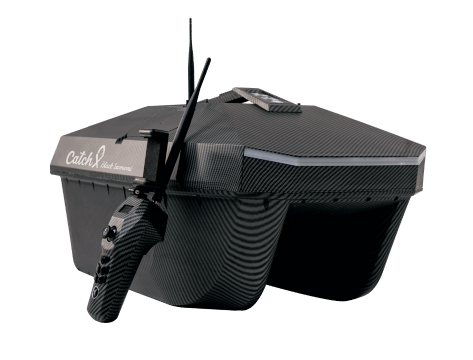What to Look for When Buying a Smart Fish Finder?
In the world of carp fishing, many anglers utilise smart fish finders to gain insights into the underwater conditions and locate their target fish. A smart fish finder is an essential tool that can greatly enhance your fishing experience. When purchasing a fish finder, it's important to consider several key parameters that will contribute to its effectiveness. Let's explore these factors in detail.
1. Battery Life:
Consider the battery life based on your fishing needs. You can inquire with customer service or check the specifications for the battery capacity of the fish finder. For instance, a smart fish finder with a lithium battery capacity of 1500mAh typically provides approximately 6 hours of usage. Selecting a fish finder with a reliable and long-lasting battery will ensure uninterrupted usage during your fishing trips.
2. Max/Min Detection Depth:
The maximum and minimum detection depths refer to the range within which the smart fish finder can effectively detect underwater targets. The maximum detection depth indicates the deepest point at which the smart fish finder can accurately detect fish or structures. Conversely, the minimum detection depth refers to the shallowest water depth where the smart fish finder can function optimally. These parameters are vital to ensure efficient performance in varying water conditions.
3. Detection Angles:
Detection angles indicate the range over which the smart fish finder emits and receives sonar waves. It is typically expressed in horizontal and vertical angles. A wider detection angle enables the smart fish finder to cover a larger area underwater, increasing your chances of locating fish. Consider models with adjustable detection angles to adapt to different fishing environments.
4. Frequency:
The frequency of the smart fish finder's sonar waves plays a significant role in determining its performance. Higher frequencies, such as 200 kHz, provide detailed images with high resolution, making them suitable for shallow water and detecting small fish or structures. Lower frequencies, like 50 kHz, penetrate deeper water layers and are ideal for deep-water fishing and locating larger fish species. Choose a smart fish finder that offers frequency options suited to your fishing needs.
5. Data Frame Rate
The data frame rate refers to the frequency at which the smart fish finder updates and displays images or data. A higher frame rate provides real-time information, allowing you to track moving targets accurately. smart fish finders with faster data frame rates deliver smoother and more seamless displays for a better fishing experience. Generally, a frame rate of around 10-15 frames per second (fps) is considered standard and suitable for most fishing situations.
6. Sensitivity Adjustment Range
The sensitivity adjustment range determines the level of sensitivity to incoming signals that the smart fish finder can be adjusted to. Higher sensitivity enables the smart fish finder to detect weaker echo signals, aiding in the identification of smaller fish or subtle underwater structures. It's important to strike a balance as excessively high sensitivity may result in increased background noise. Opt for a smart fish finder that allows for appropriate sensitivity adjustments based on the underwater environment.
7. Connection Range
When it comes to portable fish finders, the connection range can vary. Most portable fish finders offer a connection range of around 50 to 100 meters.
However, it's important to note that when using most sonar devices in conjunction with bait boats, interference may occur. This means that the signal strength and range of the fish finder may be affected when used alongside a bait boat. In such cases, purchasing an additional Wi-Fi extender can help overcome this issue and extend the effective connection range. Some brands have specifically addressed this problem by designing fish finders that are compatible with bait boats. For example, the combination of the Rippton Hydrobat fish finder and the CatchX Pro bait boat can achieve an impressive connection range of up to 300 meters when used together.

8. App Compatibility
Check if the smart fish finder supports the use of dedicated mobile applications. Some brands, like Deeper, offer their own exclusive app for enhanced functionality and data analysis. Furthermore, certain manufacturers, like Ripton, provide a well-integrated system that combines smart fish finders with bait boats. These systems allow the boat control interface and smart fish finder display to be showcased within a single app, with the smart fish finder screen appearing in a small corner of the interface, easily expandable with a simple tap.
By finding a smart fish finder that meets your specific needs, you can enhance your angling skills and increase your chances of a successful fishing trip. Happy fishing!


























